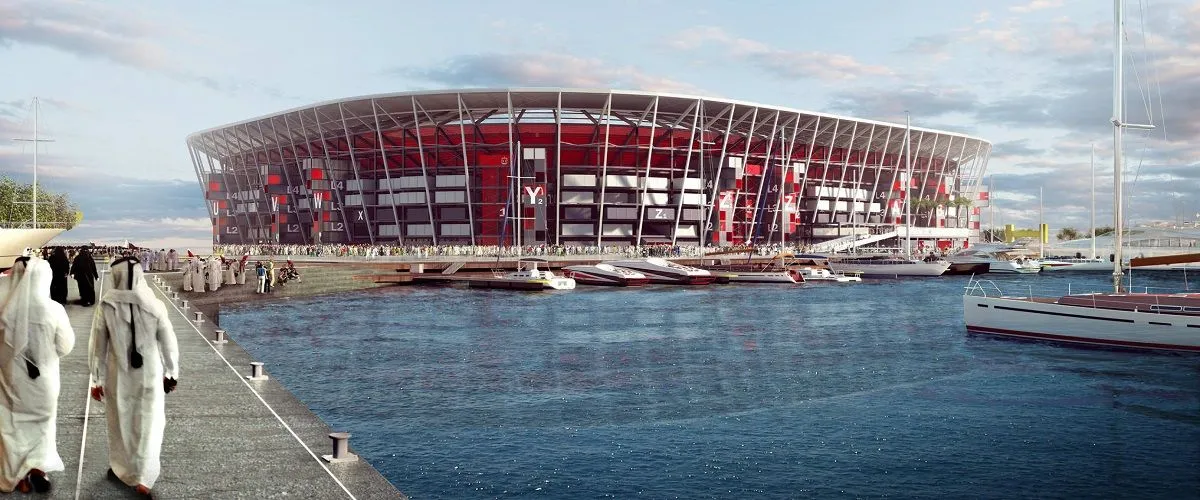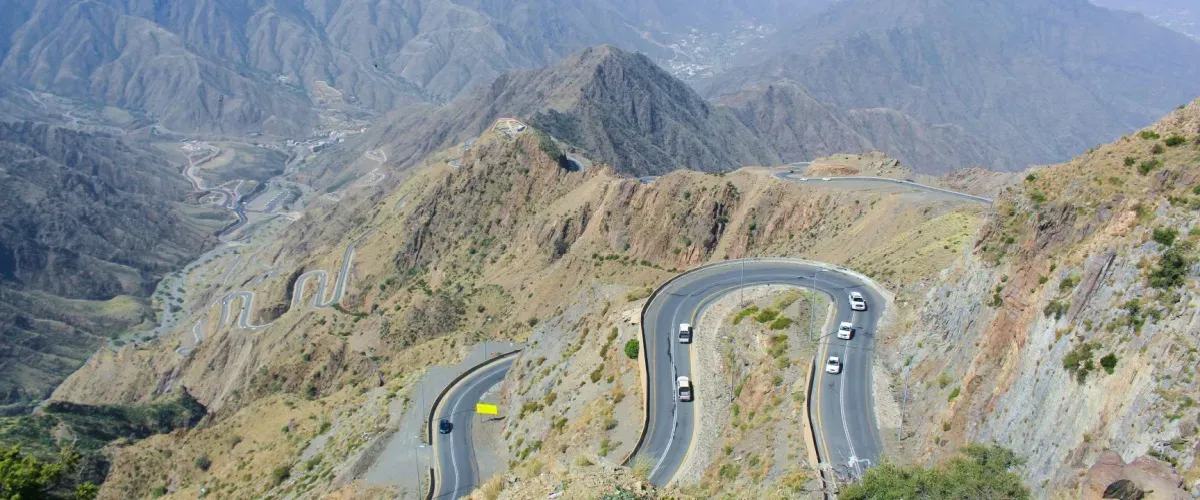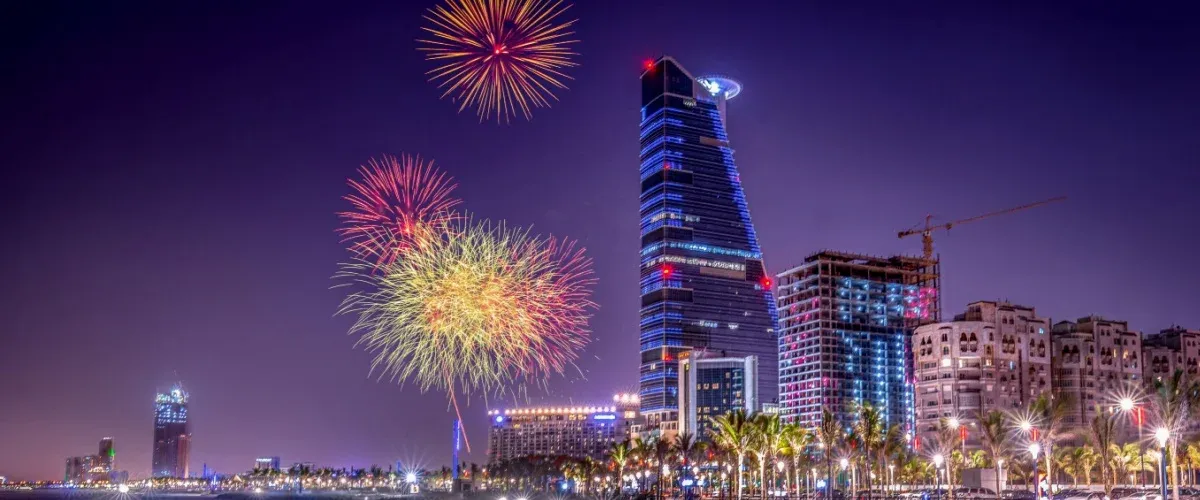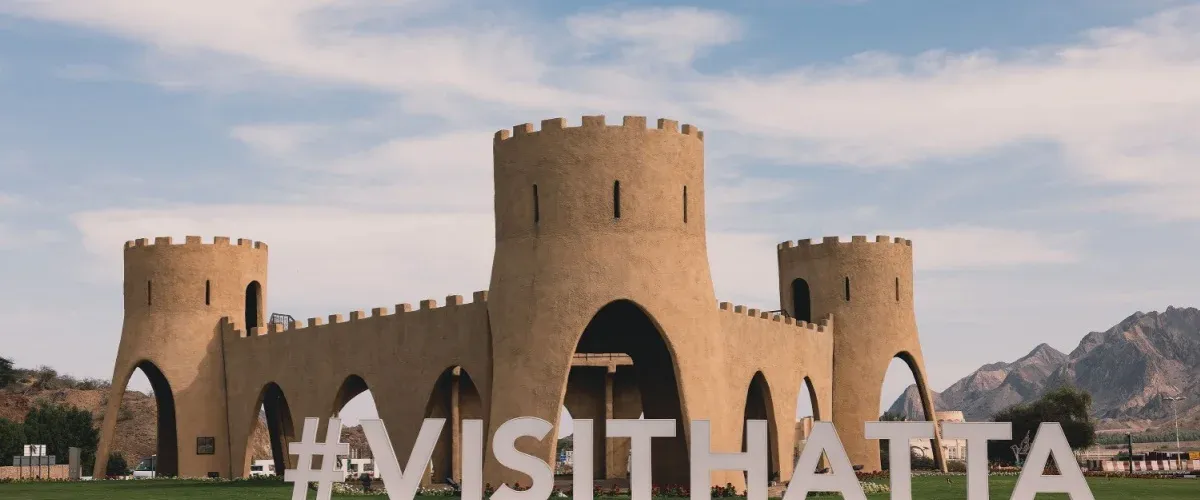Are you a football fan? Can't wait to cheer for your team in the upcoming FIFA World Cup in Qatar? Well, there's a lot that you need to look forward to as far as the upcoming world cup is concerned. With a staggering $200 billion being spent on infrastructure projects ahead of the competition, Qatar is leaving no stones unturned in preparations for the world cup, and the Ras Abu Aboud Stadium Qatar is a significant part of that.
One of the most innovative stadiums in the world, the arena is set to be the venue for the upcoming FIFA matches in the country. So, let's take a closer look at what Ras Abu Aboud Stadium offers.
How Is The Design Of Ras Abu Aboud Stadium Qatar?

One of the most unique stadiums in Qatar, the Ras Aboud Stadium is a great example of innovation. Having been built using shipping containers and modular steel elements, the stadium signifies the innovative measures taken by Qatar in preparations for the upcoming world cup. With removable seats and building blocks, this is an arena that would be easily dismantled and repurposed once the world cup gets over.
What Is The Seating Capacity Of Ras Abu Aboud Stadium?
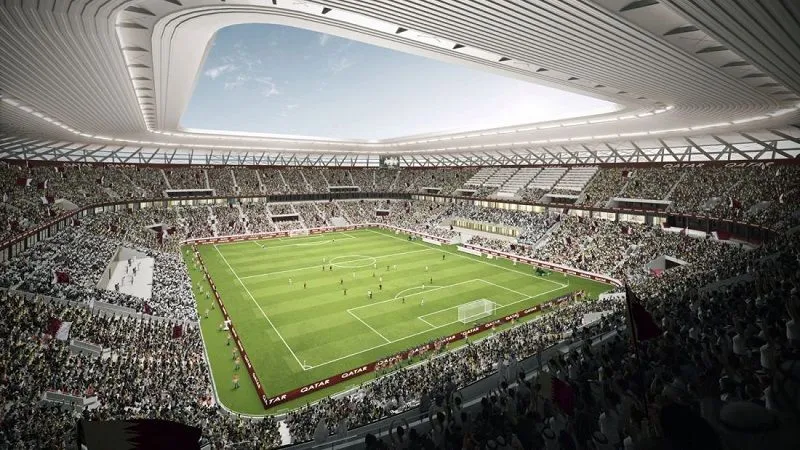
The Ras Aboud Stadium would have a seating capacity of 40,000 once the FIFA World Cup begins in the country. While the stadium has been constructed with shipping containers, the seats would also be easily removed once the world cup gets over in the country.
The Ras Abu Aboud Stadium would only be hosting world cup matches up till the round of 16 stage of the competition. There will be only seven matches played during the FIFA World Cup here.
Sustainability With Ras Aboud Stadium
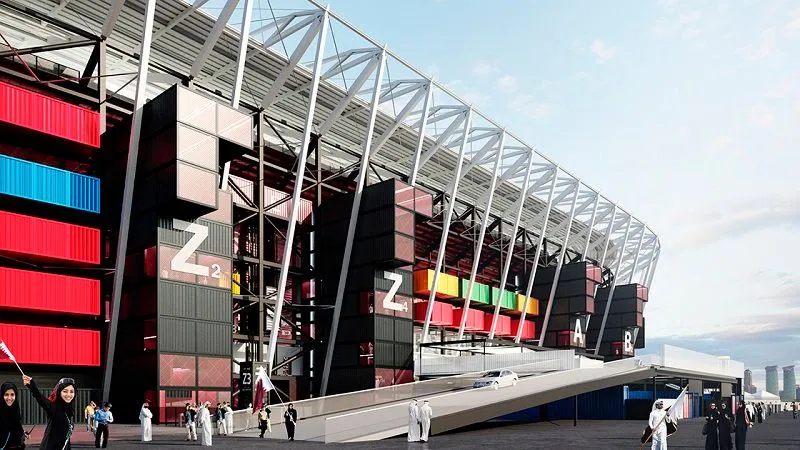
The level of importance that Qatar has given to sustainability isn't a surprise anymore. Every venue that is being built for the world cup has international standards of sustainability which are in line with the country's efforts in minimizing the environmental impact. So, here are some key points to note about the Ras Abu Aboud Stadium as far as sustainability is concerned.
- The Ras Abu Aboud Stadium location is what stands when it comes to sustainability. The arena is set on the seaside where a cool breeze blows around. This eventually leads to less load on the cooling systems of the stadium and saves energy.
- One of the most notable features of the Abu Aboud Stadium in Qatar is the fact that the whole stadium has been built with shipping containers, building blocks, and removable seats. Once the world cup gets over, the venue would be completely dismantled and repurposed. The seats would be removed and most parts would be used for multiple sporting and non-sporting events.
- If saving money was the agenda for Qatar in preparations for the world cup, the Ras Abu Aboud Stadium would sit on top. Since fewer cuisines construction material has been used in the making of the stadium, the cost that goes into the construction has been significantly reduced.
- Since not much construction material has gone into the making of Ras Aboud Stadium, the construction waste has been next to nothing at the site which has greatly benefited the country's goals of minimizing environmental damage.
Suggested Read: Top Contenders To Win The FIFA World Cup 2022
What'll Be The Legacy Of Ras Abu Aboud Stadium After The FIFA World Cup?
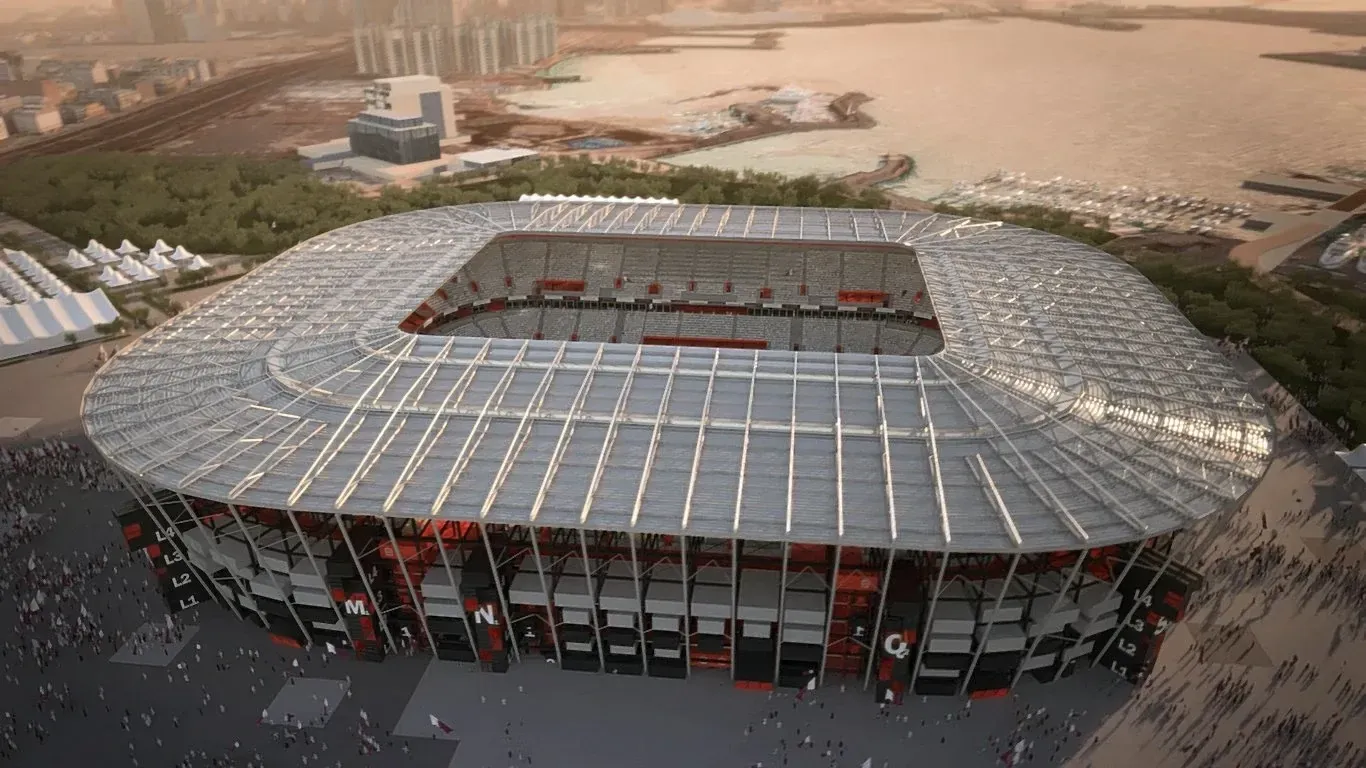
Once the FIFA World Cup gets over in Qatar, the Ras Abu Aboud Stadium would leave a lasting legacy for good reasons. One of the finest places to visit in Qatar in wake of the world cup, the stadium might well be the first-ever world cup venue to be completely dismantled and repurposed after the world cup gets over. The parts of the venue would be donated to other sporting projects which speaks volumes about the sustainable approach in the construction of this venue. The Ras Aboud Stadium would be an inspiration for other sporting projects around the world.
Is The Construction Of Ras Abu Aboud Stadium Complete?
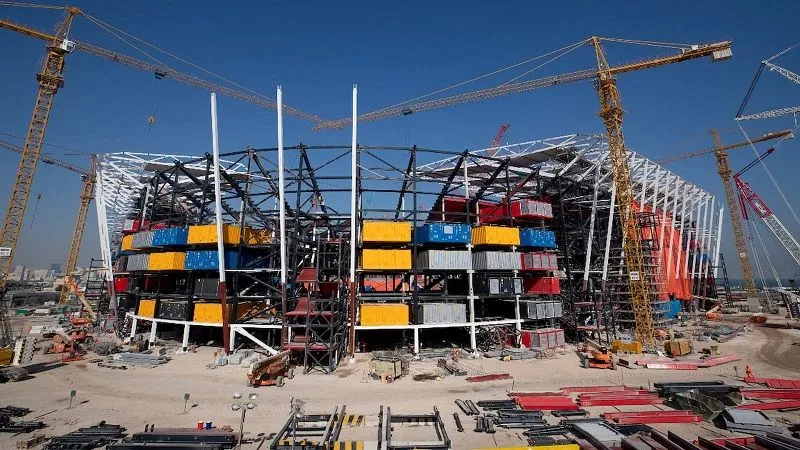
The construction of the Ras Aboud Stadium is one of the most anticipated projects in Qatar and the arena is in the final stages of its construction. While the construction of the main roof and stands is underway, most of the seats and building blocks are already in place. The stadium, hence, is well underway for completion ahead of the world cup.
Suggested Read: FIFA World Cup 2022 Predictions Every Football Fan Should Know
A venue that will be hosting seven matches once the FIFA World Cup 2022 kicks off in the country, the Ras Abu Aboud Stadium Qatar is a pure example of innovation combined with luxury. The stadium has been built using shipping containers and building blocks and will be completely dismantled and repurposed after the world cup. While presenting a telling example of how something can be made out of nothing, the stadium would also be a major attraction when the FIFA World Cup kicks off in Qatar.
So, what's making you wait? Book your plane tickets to Qatar and come witness a footballing spectacle in the Middle East. Make sure to book your flight well in advance in order to avoid any last-minute rushes.
Ras Abu Aboud Stadium Qatar - FAQs
The Ras Abu Aboud Stadium has been built using shipping containers and modular steel elements, the stadium signifies the innovative measures taken by Qatar in preparations for the upcoming world cup. With removable seats and building blocks, this is an arena that would be easily dismantled and repurposed once the world cup gets over.
The Ras Aboud Stadium would have a seating capacity of 40,000 once the FIFA World Cup begins in the country. While the stadium has been constructed with shipping containers, the seats would also be easily removed once the world cup gets over in the country.
One of the most notable features of the Abu Aboud Stadium in Qatar is the fact that the whole stadium has been built with shipping containers, building blocks, and removable seats. Once the world cup gets over, the venue would be completely dismantled and repurposed. The seats would be removed and most parts would be used for multiple sporting and non-sporting events.
The construction of the Ras Aboud Stadium is one of the most anticipated projects in Qatar and the arena is in the final stages of its construction. While the construction of the main roof and stands is underway, most of the seats and building blocks are already in place. The stadium, hence, is well underway for completion ahead of the world cup.
An innovative arena set to welcome football fans from around the world, the Ras Aboud Stadium would be ready to host a number of world cup matches in the winter of 2022. There will be a total of seven matches played at the stadium which would include one round of 16 match during the world cup.
The FIFA World Cup 2022 would be played in the winter of 2022. The competition would begin on the 21st of November 2021 and end on the 18th of December with the final at Lusail Stadium. This will not only be the first-ever winter world cup in the Northern Hemisphere but would also be the first-ever world cup in the Middle East.
The Ras Abu Aboud Stadium location is what stands when it comes to sustainability. The arena is set on the seaside where a cool breeze blows around. This eventually leads to less load on the cooling systems of the stadium and saves energy.
The FIFA World Cup 2022 would be held in eight stadiums in Qatar. This would be the first time when the competition would be held with only eight venues. In fact, 1978 was the first time when the host nation Argentina hosted the FIFA World Cup with just six stadiums. Qatar will now be hosting the competition with only eight stadiums.

